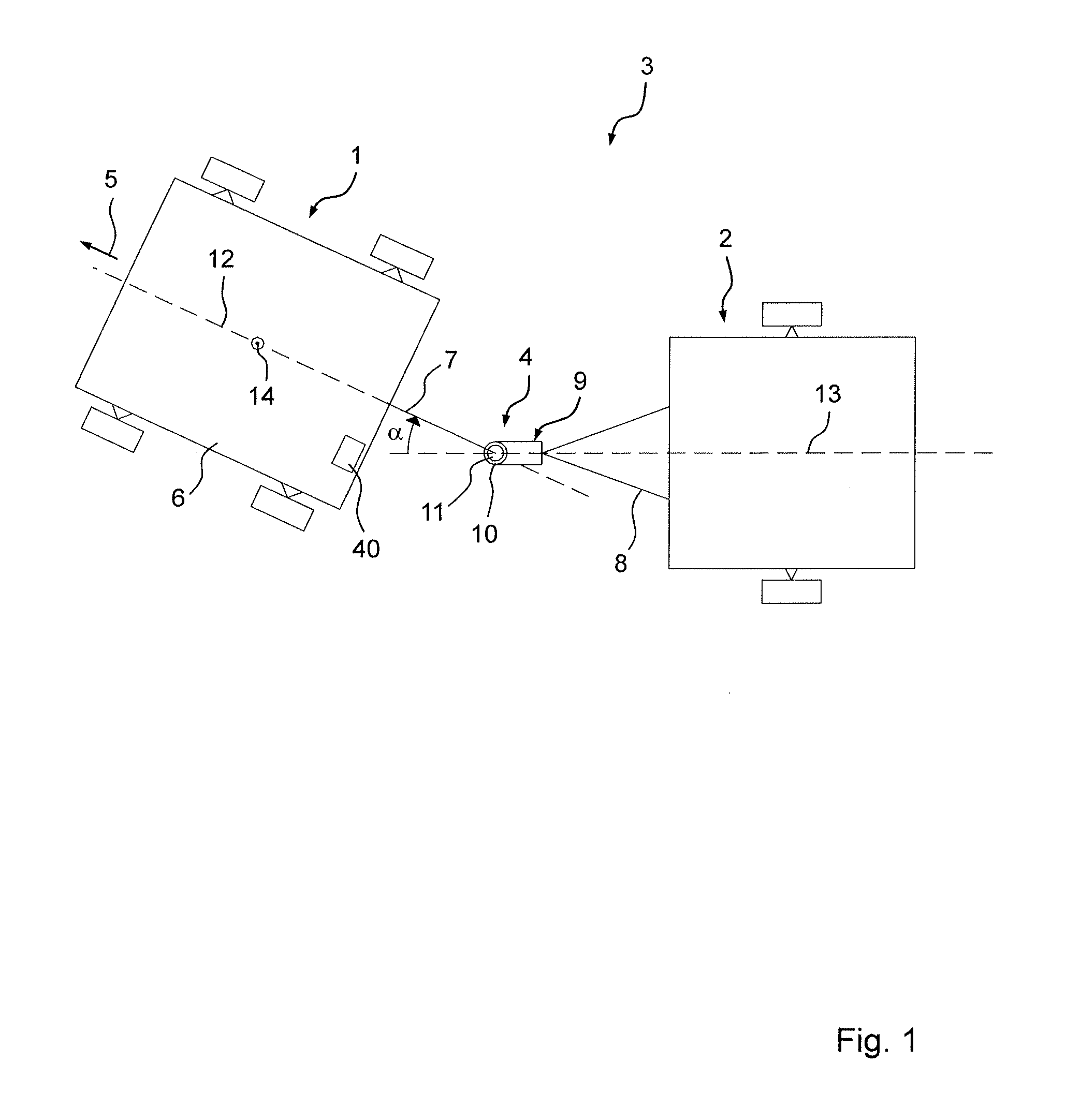Trailer towing device for a tractor vehicle
a technology for tractor vehicles and towing devices, which is applied in the direction of towing devices, vehicle components, transportation and packaging, etc., can solve the problems of premature wear of bearings, small structural space available for integrating rollers, and reduced service li
- Summary
- Abstract
- Description
- Claims
- Application Information
AI Technical Summary
Benefits of technology
Problems solved by technology
Method used
Image
Examples
Embodiment Construction
[0043]FIG. 1 shows a view from above, of a combination 3 consisting of a tractor vehicle 1 and a trailer vehicle 2, wherein the tractor vehicle 1 is articulated to the trailer vehicle 2 by means of a first embodiment of a trailer towing device 4. The usual forward-driving direction of the combination 3 is indexed 5. The trailer towing device 4 comprises a holder 7 in the form of a coupling arm which is solidly connected to the vehicle body or chassis 6 of the trailer vehicle. In addition a coupling lock 9 is fixed to a tow-bar 8 of the trailer vehicle 2, which comprises a ball seating 10 into which fits a schematically represented coupling ball 11 arranged at an end of the coupling arm 7 at the rear relative to the driving direction 5. The coupling lock 9 forms a front end of the tow-bar 8 in the driving direction 5.
[0044]The angle α between the longitudinal axis 12 of the tractor vehicle 1 and the longitudinal axis 13 of the trailer vehicle 2 forms the so-termed articulation or com...
PUM
 Login to View More
Login to View More Abstract
Description
Claims
Application Information
 Login to View More
Login to View More - R&D
- Intellectual Property
- Life Sciences
- Materials
- Tech Scout
- Unparalleled Data Quality
- Higher Quality Content
- 60% Fewer Hallucinations
Browse by: Latest US Patents, China's latest patents, Technical Efficacy Thesaurus, Application Domain, Technology Topic, Popular Technical Reports.
© 2025 PatSnap. All rights reserved.Legal|Privacy policy|Modern Slavery Act Transparency Statement|Sitemap|About US| Contact US: help@patsnap.com



